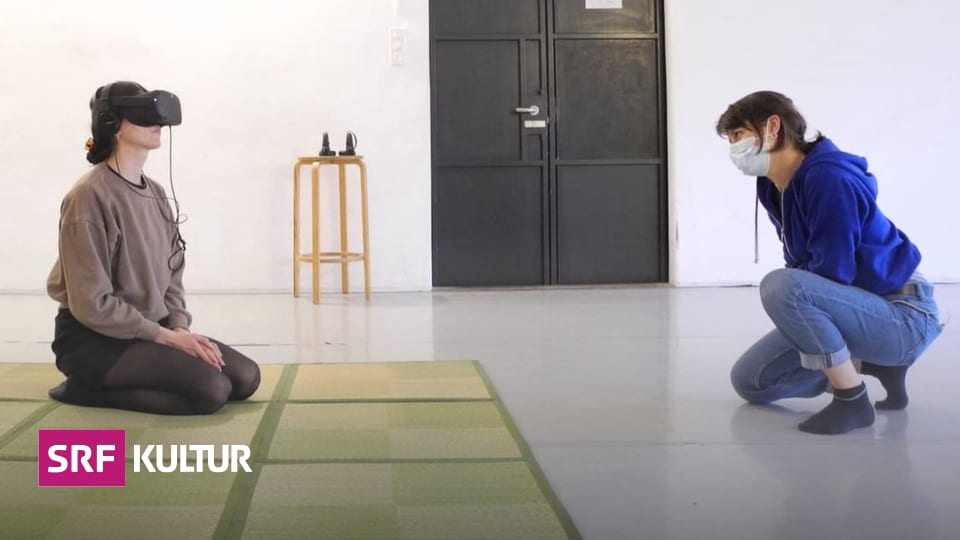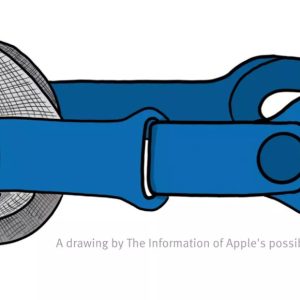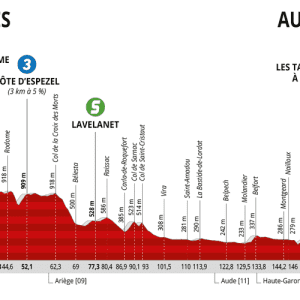Art installation allows you to immerse yourself in a literary text using virtual reality glasses. How do we read the change now?
A square picnic blanket in red and white under your feet, the sea rushes in front of you: so you stand there and try to orient yourself. A colossal statue with hollow eyes sits beside the ceiling. All attempts to interact with it fail.
Another creature appears, a floating head with two hands. One can speak to this object. It leads you to a rock where you suddenly encounter your own language. Everything said in the game appears as text on stone. A strange, almost poetic experience.
Legend:
The virtual world of “my language and me” makes language visible and tangible.
Benjamin Rudolph
Ilse Aichinger’s text becomes a game
This is just one of the experiences that can be had in the VR installation “My Language and I”. The project is based on a script by Ilse Aichinger, implemented by media artist Sarah Elena Müller in close collaboration with her project partner Lilith Becker, VR programmer Benjamin Rudolf and director Corsin Gaudenz.
This virtual reality experience is largely individual: what happens in the course of the game depends on what the individual players do.
You no longer have to read from start to finish
Virtual reality is a novelty to deal with literature. Suddenly it became possible to dive directly into the text. Claudia Keeler thinks this is an understandable development. A scholar of literature and culture at the University of Zurich is looking at how to change our reading processes.
“There is this traditional understanding that you read a line text from start to finish and therefore understand it ‘correctly,’” says Claudia Keeler. Digitization will change that understanding.
Today you can quickly create new links using links. As a result, we are moving from the traditional understanding of texts as something “linear” to a more spatial perception of reading.
In the head of the author?
However, with virtual reality, we don’t necessarily get more direct access to the text, says Claudia Keeler. True, there is a fantasy that if you immerse yourself in literary texts, you can look directly into someone else’s head.
This is definitely possible with such a virtual reality project. But here you can look less at the head of the narrator. Instead, look at another interpreter’s header, says Claudia Keeler.
“My Language and I” does not allow us to experience Ilse Aichinger’s text directly, but rather the way Sarah Elena Müller and her team imagine the world of this text.
separate trip
Working in the game world has also brought the creators closer to the script: “The longer I work in the game, the more risk I will know how it relates to Ilse Aichinger’s script,” says project partner Lilith Becker.
The audience reacts enthusiastically. Even if he is not familiar with the basis of the text. “My language and I” is an experience: “I just went on a trip,” says one of the people who just got out of the game. “That was pretty far apart.”
SRF Radio 2 Kultur, context, January 11, 2021, at 9:03 am.

“Certified gamer. Problem solver. Internet enthusiast. Twitter scholar. Infuriatingly humble alcohol geek. Tv guru.”





